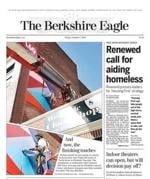When I graduated high school, I never had a thought of going anywhere else to college than City College on Convent Avenue in Harlem. It was free, my Russian immigrant father had graduated from there and private universities weren’t within the realm of economic possibility, nor were they offering a mediocre student like myself a scholarship.
My four years at City were, on one level, personally transformative — I became emotionally freer and much more self-confident, more so intellectually than psychically. Still, my undergraduate education had its glaring flaws. Most of my classes felt uninspired and failed to offer the intellectual passion and complexity I desired. Too many of the courses were dependent on textbooks and short-answer exams; they often felt no more inventive than engaging in rote learning. However, the friends and acquaintances I got to know in classes and in the dingy, dark cafeteria with its watery coffee reinforced my desire to seek a more cosmopolitan existence and embrace a life where ideas played a central role.
After a number of peripatetic graduate school years, when I moved from university to university (four in all) and coast to coast, I spent the whole of my teaching life at City University of New York, almost all of it at the College of Staten Island and the Graduate Center. They were rewarding years whose pleasures far outweighed any minor complaints or criticisms. I loved teaching — a vocation that I felt totally at ease with — and I liked the fact that the classes at the College were composed mostly of working-class, first-generation college students. A sizeable minority of these were open to becoming enthusiastic about — a few even transformed by — the books, films and ideas we discussed. I know I am biased, but most of the teaching that my colleagues provided at Staten Island was far more imaginative and committed than the education I received at City College as an undergrad. And the Graduate Center had a rich mixture of foreign students and older homegrown ones, some who already had careers, and were knowledgeable and fervent about the books and readings that were assigned and discussed. It always gave me great pleasure just going in to teach an evening class there.
It’s been more than 20 years since I retired, and I now think less about City University in personal or experiential terms than as an institution that is the nation’s largest urban public university. It was founded in 1847 as City College, the nation’s first free public institution of higher learning with the motto “where the children of the rich and the poor take their seats together.”
Today it has 25 colleges — seven community colleges, 11 senior colleges and seven graduate or professional institutions — that are spread across the city’s five boroughs, serving 243,000 degree-seeking students, and awarding 55,000 degrees each year. The university has one of the most diverse student bodies in the United States — the Black, white and Hispanic undergraduate populations each make up more than a quarter of the student body, and Asian undergraduates make up 18 percent. Fifty-eight percent are female, and 28 percent are 25 or older. More than 80 percent of the university’s graduates stay in New York after they graduate, contributing to all aspects of the city’s life.
Given that almost half of CUNY’s students come from households earning less than $20,000, its social mobility track record has a very high rating. In the Brookings “bottom-to-top” rankings, six CUNY constituent colleges made the top 10: Baruch College was ranked second nationwide, City College of New York third, Lehman College fourth, John Jay College fifth, Brooklyn College ninth and the New York City College of Technology 10th. CUNY is one of nation’s leading institutions providing the possibility of social and economic mobility.
However, I don’t mean to treat CUNY as the apotheosis of higher education. It has consistently been hampered by budget restraints that have meant little investment in career development, and there have been budget shortfalls caused recently by a decline in enrollment. Still, in response to the need for career development, a project has been proposed — the Science Park and Research Campus Kips Bay — which is estimated to generate $25 billion in economic impact over three decades while creating 10,000 jobs and building a pipeline from local public schools. The campus would also include a New York City Department of Education high school specifically tailored to prepare students for careers in health care and science. This project is a hopeful one, but it’s not always easy moving from ambitious plans to reality.
A colleague who was much more active in the institutional politics of CUNY than I ever was suggested that one CUNY problem lies with its board of trustees. They are a panel of 17 members appointed, for the most part, by the city and state government, who appoint CUNY’s chancellor. The new head of the faculty union (PSC-CUNY) James Davis felt it “would be best if these candidates for appointment by the governor and mayor had to demonstrate a prior record of service or commitment to public higher education as a baseline qualification.” That doesn’t always happen, and there are trustees appointed who understand little about CUNY’s particular mission.
Yes, CUNY can be criticized in many ways, and our union does well confronting its imperfections. But in my experience and for thousands of others who attended and graduated, it was and remains a beacon of hope and transformation.

